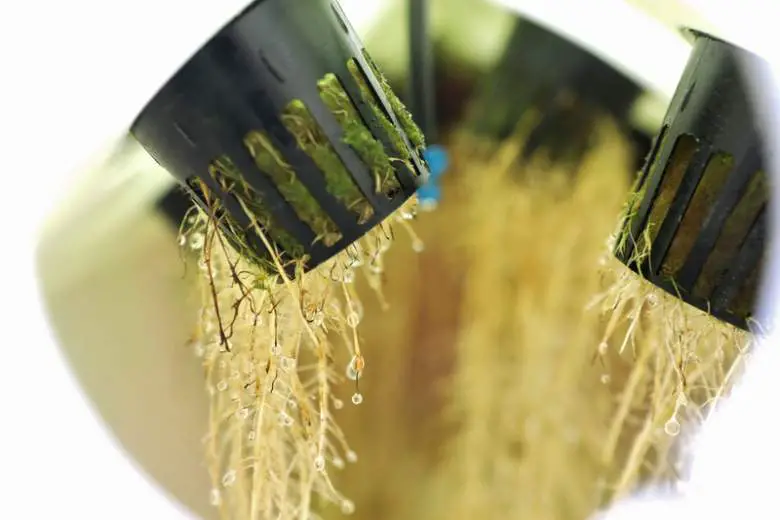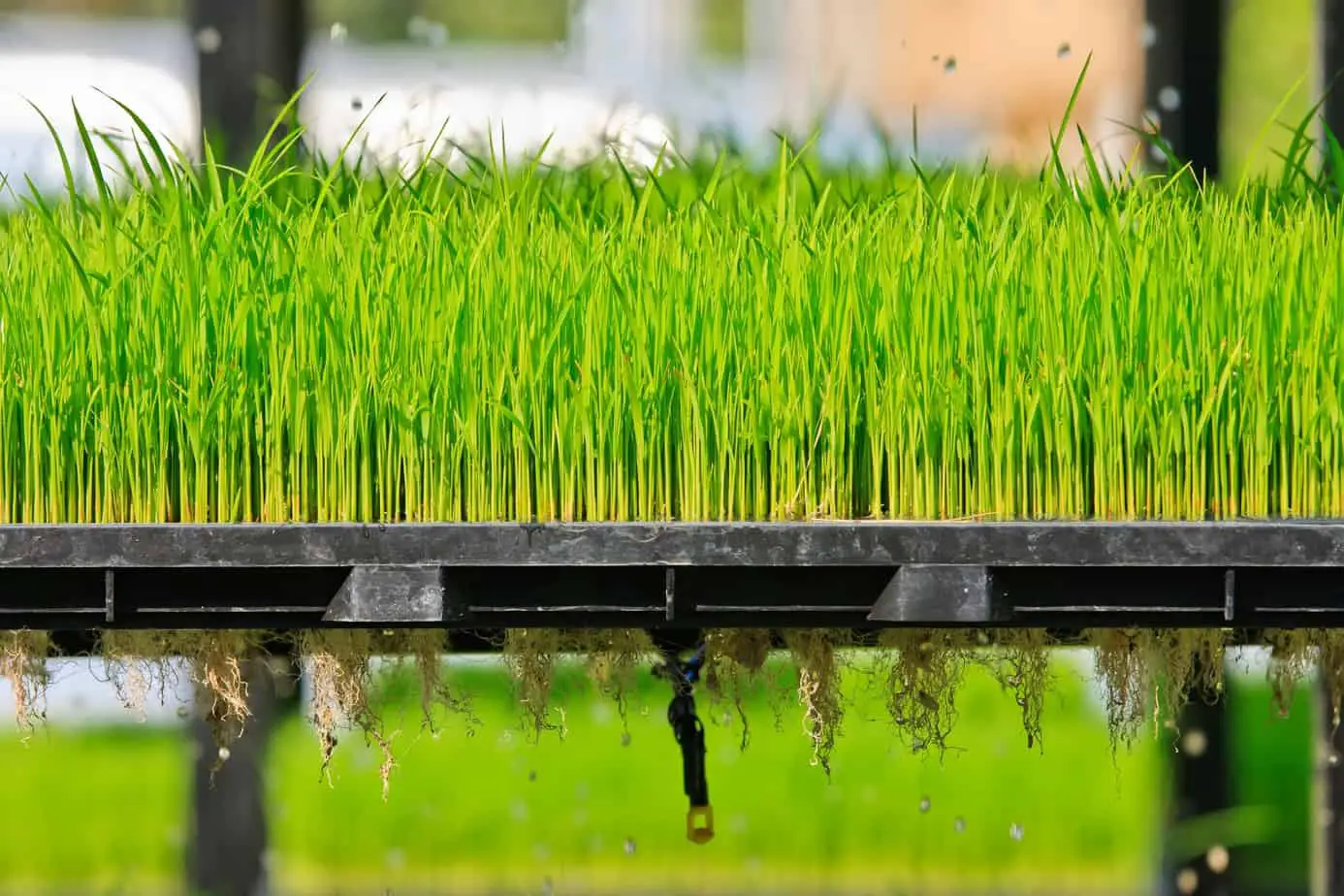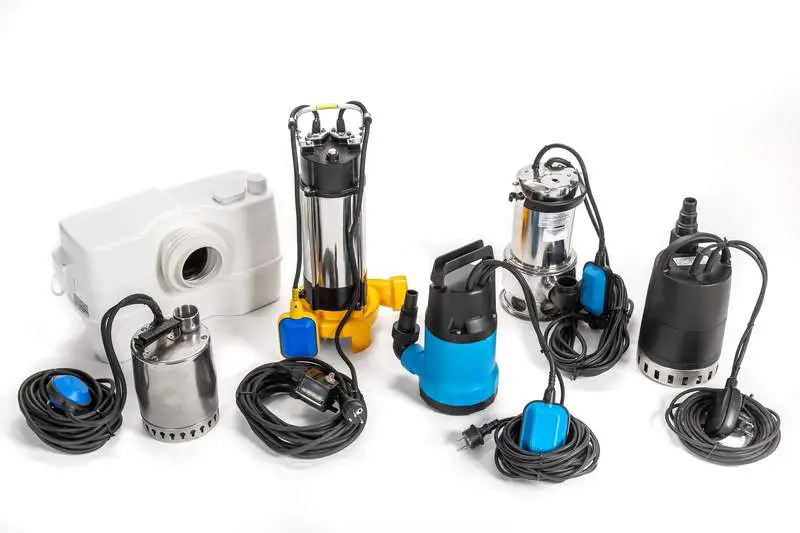Hydroponics is an established form of growing crops with the roots immersed in water that has been around for a number of years now and is a highly successful and environmentally friendly method of growing a wide range of harvests.
Aeroponics is a similar method but without immersing the roots completely in water, the roots dangling freely in the air, unencumbered by soil or water. A fine mist of water is periodically sprayed to deliver the essential nutrients and hydration with equally impressive results.
And now there is Fogponics.
This method takes nutrient delivery to the next level, enshrouding the plants in a fine cloud of water that works extremely effectively, bringing additional benefits through this all-pervading fog.
So How Does Fogponics Work?
The established framework of aeroponics acts as the base for this revolutionary system, but the fog doesn’t just appear by itself. Water has to be siphoned from a source and vibrated through a system of electric foggers to create a haze similar to what is encountered in rain forests, and that haze forms the new humid climate conditions for optimum crop growth.
These ideal conditions found in the atmosphere of rainforests are in a constant cycle of being hot, humid, and extremely wet. Under these conditions, it has been found that vegetation becomes very lush and becomes very abundant very quickly.
The fog created artificially in fogponics, however, is generally dry and laden with minute droplets of water. In fogponics, the contents and the fog itself can be controlled in regards to its size, the frequency of its appearance, dispersion, and the variety of nutrients contained within it. And the beauty of it is that establishing a farm is not too difficult.
If already established, converting a large commercial aeroponics farm into a fogponics one can put a squeeze on the finances, but a smaller installation doesn’t have to break the bank and can be done on a budget.
Once the scale of the operation is settled upon and goals established in regards to crop selection, the apparatus can be reconfigured, scaled up or down to conduct a series of trials if necessary to confirm whether this growing method is the right direction for your farming ambitions.
What would be required to either conduct a small experiment or to start a small-scale operation within a budget, is a construction-grade storage container. The size of the container will be dependent on what goals are set in regards to operational parameters and the growing potential of the plants to be installed.
To incorporate the plants, several rows of approximately 2-inch holes need to be drilled into the lid of the container, evenly spaced out in a grid formation to allow for plants to grow unencumbered by neighbors set too close.
Before being able to insert the plant stems, foam-filled net cups need to be glued into the holes with notches cut into them to support the cloning plants themselves, and allow the stems to dangle within the container in anticipation of the sprouting roots.
Water then needs to be added to the container along with the nutrient mixture, and finally, the fogger can be added to the equation to complete the set-up.
Choosing the right fogger is the key to success and its installation either into a small-scale operation or into a larger commercial endeavor is crucial.
First, it is important to understand that there are foggers for fogponics and foggers that are used for different applications, such as the elimination of bugs with pesticides, for example. These fumigation foggers use aerosol propellants to create the fog to eliminate pests such as cockroaches.
The fogger that is to be introduced for a fogponics network works differently from those types and has to have the capacity to go ultrasonic, its role being to convert water into a specialized vapor.
What enables the fogger to convert the water into the much sought-after fog, is its high oscillating capacity to reach a crescendo of 2MHZ, which equates to an incredible two million vibrations a second. By generating this level of ultrasonic frequency, the water becomes nebulized, which is another way of saying that it becomes a fog.
These specialized foggers are the key to fogponics, and the small droplets that are generated within the fog are then either blown slowly over the plants or are fed into an enclosed space where the roots are encased.
This is an extremely efficient form of delivering ultra-low volumes of nutrients and water for hydration and supplementation and is impressive in its simplicity.
In this environment, plants tend to absorb the maximum level of nutrients required to thrive and grow. This is due to the ability of the fog to penetrate and seep into every nook and cranny of the crops, unlike spraying, ensuring a constant supply and complete delivery to all the plants so they all grow uniformly.
In Fogponics Size Matters
The droplets of water in aquaponics used in the misters typically have a water psi pressure sufficient to produce water droplets of 50 microns or larger. These size droplets wouldn’t work in the system of fogponics, being way too large to float in the air as part of the fog.
To reduce the size of the droplets and create the fog itself, the water pressure is dialed up to 800 to 1200 psi to atomize the droplets and reduce the size of the droplets to 5 to 30 microns. At this size, the fog can be created using a high-pressure pump, distribution piping, nozzles, controllers, timers, and then basically the system is ready to go.
This precision high-pressure reduction in the size of the water droplets is the key to the effectiveness of fogponics, and is especially suitable for seedlings and cloners from cuttings owing to their undeveloped roots which are susceptible to not absorbing sufficient nutrients in other methods.
Fortunately, fogponics tends to be gentler and more pervasive. This means that the appropriate level of moisture can be delivered, and more importantly be controlled to deliver the right amounts of water so the roots do not dry out from being overlooked by the spraying system, or become waterlogged because they are on the front line.
With the correct timers and monitors installed, the fog can be emitted at a level of frequency desired by the grower to provide the necessary quantity of the mixture for plant sustainability, for all the crops.
Herbs and green vegetables such as cucumbers, lettuces, and spinaches also flourish under this fog-covered environment.
Why Choose Fogponics?
Being a sub-technique of aquaponics, the adjustment to Fogponics isn’t a great leap in regards to equipment or structural changes. But why make the change, why go that route?
The answer, surprisingly, lies in oxygen delivery, and the size of the water droplets.
For optimum oxygen delivery to the plant roots, the water droplets ideally need to be within the range of between 5 – 30 microns. In aquaponics, the water emitted from the sprayers is between 30 – 100 microns. They can be reduced to the lower range but the density of the water has to be increased, so in the end, it is not a practical solution.
Something that is not widely known even aquaculturists, is that the bigger the water droplets the less oxygen is contained within them, and the less oxygen that is delivered to the plant roots. To counteract that deficiency, even in such an efficient system as aquaponics, more water has to be utilized to provide enough oxygenation.
Alternatively, if the droplets within the fog are too small then not enough nutrients will be delivered for the plants to grow.
With Fogponics, the ultrasonic nebulizer takes those reduced-sized water droplets and converts them into the fog that hangs in the air, fully loaded with oxygen and nutrients, ready for the plants to absorb what they need.
And there is an even more beneficial by-product of these nebulizing foggers.
With the smaller droplet sizes, there is a more efficient and faster nutrient solution absorption by the plant roots, resulting in a much faster growth rate and a quicker harvest. Due to this abundantly high level of oxygen and the constant supply of water saturation, a dramatic boost to the metabolism of the crops occurs.
How does this work exactly?
Under this environment, the roots develop what’s known as trichoblasts, fine hairs that sprout along the stems. It is these fine hairs that are responsible for turbo-boosting the metabolism and increasing the plants’ ability for a heightened level of nutrient absorption.
These fine hairs on the roots thrive within the atmosphere of the dense fog, extracting oxygen, water and nutrients at increased levels compared to other farming methods.
This hyperactivity doesn’t oversaturate the roots, fortunately, it just allows them to absorb a greater amount of nutrients efficiently from the constant presence of the fog, with the results that the plants grow at a faster rate.
Overall, the introduction of a fogger elevates an impressive farming endeavor to the next stage of evolutionary growth. It becomes more cost-effective and more profitable, no matter what crops are being grown.
The water-saving aspect is accomplished because the fog is trapped within an enclosed space, and the minute water droplets are utilized more conservatively in comparison to other farming methods.
Under this environmentally friendly farming umbrella, the water used is also not lost to evaporation, and that lack of wasteful evaporation saves on crucial nutrient depletion that could be detrimental for the plants.
Additionally, in this system these nutrients are evenly dispersed to the roots of all the plants to ensure equal growing capabilities across the board, so no favoritism is shown.
A Fogponics System
Fogponics is a revolutionary, energy-efficient indoor farming system that is more than worth the investment in terms of money and time. Just ask NASA.
Through experimentations and in-depth research, the technicians at NASA have practiced and trialed a plethora of growing scenarios with various plants and crops, such as potatoes, to gauge the most efficient growing methods in an effort to reduce cargo costs for future space missions.
They discovered that it could be a game-changer for the future exploration of space, the efficiency of the foggers easily boosting the capacity to actually grow produce faster without installing heavy, cumbersome equipment. In space, the only missing component, however, would be sunlight and photosynthesis.
In the fogponic farming system, this photosynthesis is encouraged by the use of LED lights to imitate the life-giving properties of the sun itself. A process of conversion is then initiated with the artificial light being converted into chemical energy.
Further reactions within this process instigates the separation of the oxygen and hydrogen molecules to release carbon dioxide into the atmosphere for the crops to soak up.
All of this is undertaken automatically within the system that is fully controllable, scalable, and starts from a simple fogging machine.
So, if it’s good enough for NASA…





